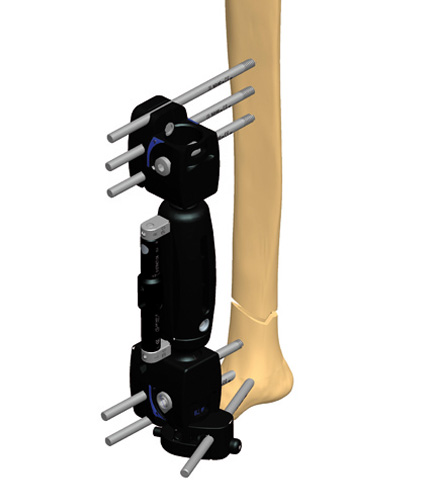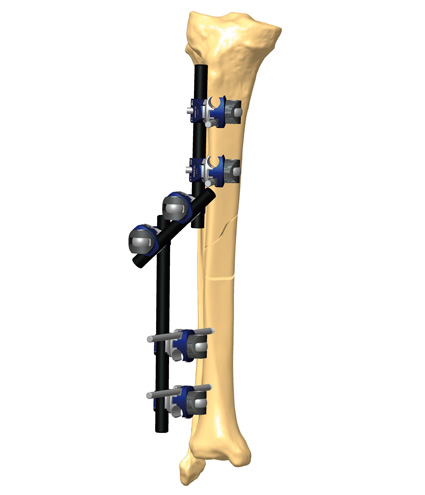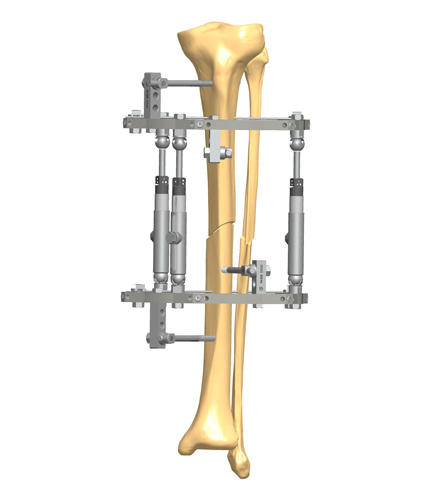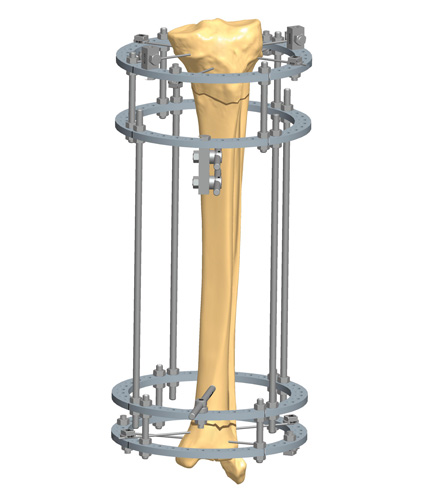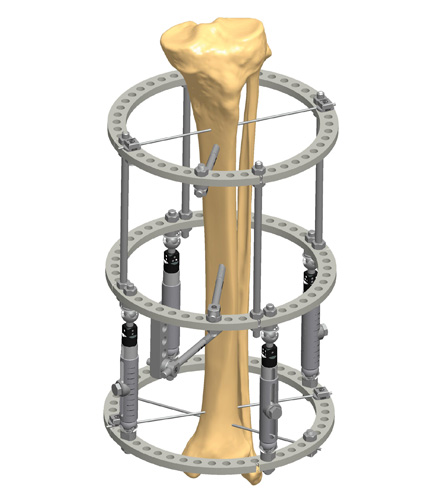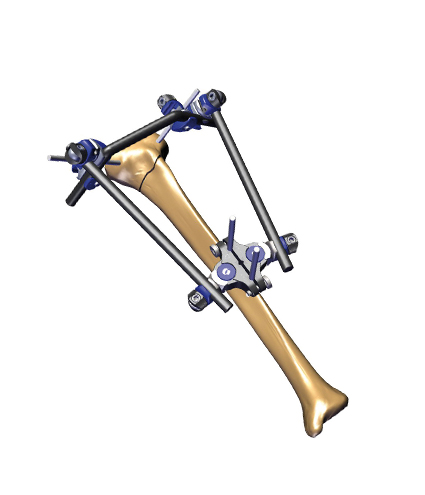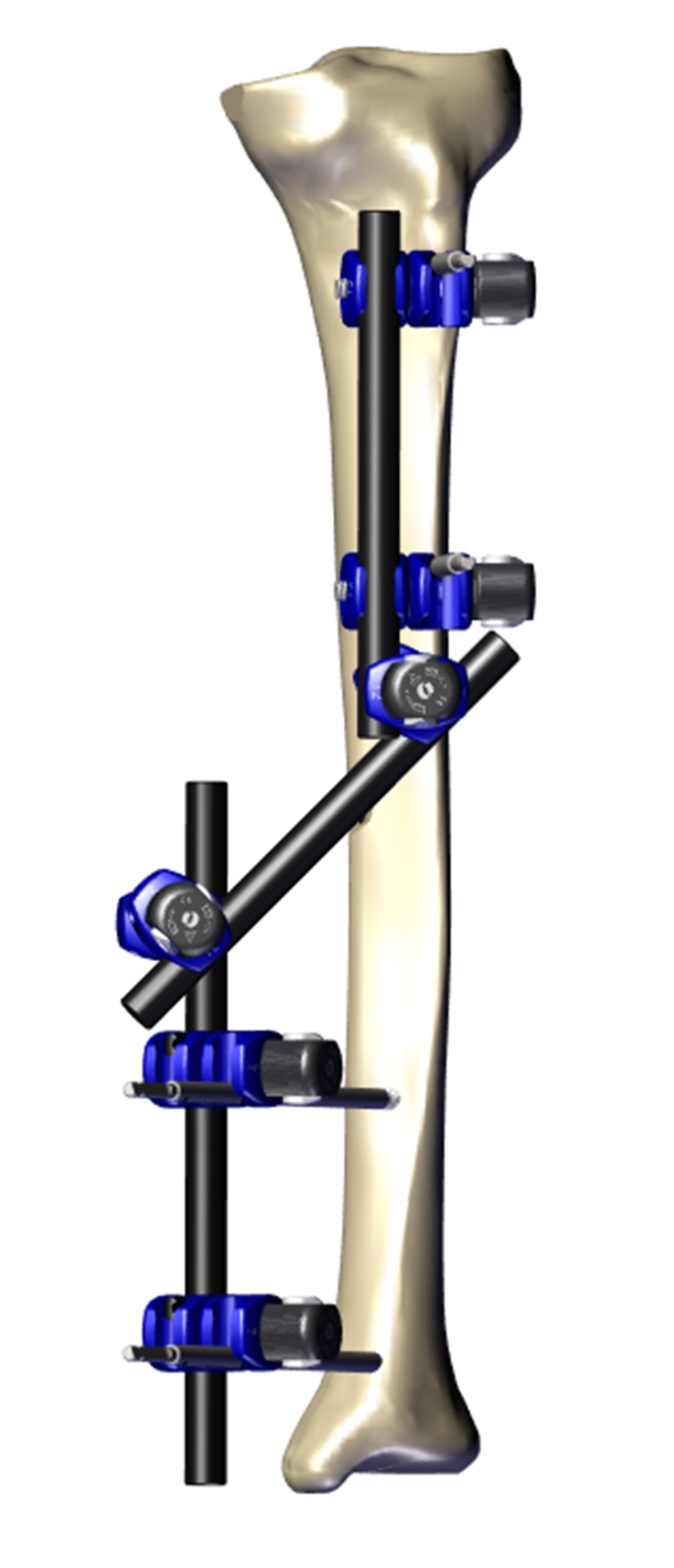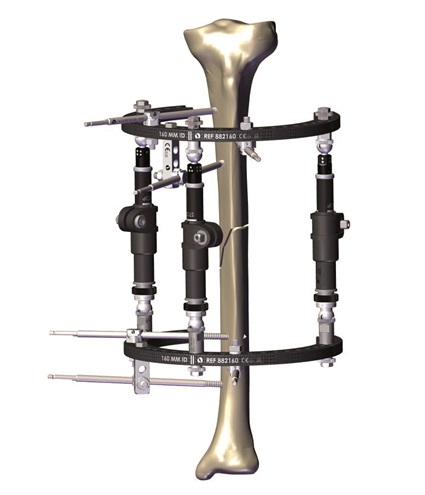3C20
Distal tibial fracture stabilized using the XCaliber Fixator (91000 series) with the T-Clamp distally.
Array
(
[0] => Array
(
[name] => Weight Bearing and Dynamization
[img] =>  [date] => 2021-11-17
[content] =>
[date] => 2021-11-17
[content] => Weigh bearing is considered a significant clinical issue particularly when an external fixator has been applied to a lower limb. If mechanical stability is in fact a mandatory condition for promoting fracture healing, other key components for a full recovery of the bone are early weight bearing and dynamization.
[readmore] => Read More
[meta] =>
)
[1] => Array
(
[name] => Dealing With Pin Site Problems
[img] =>  [date] => 2021-10-17
[content] =>
[date] => 2021-10-17
[content] => To prevent and manage pin site problems, the patient should be clearly informed of the protocol he/she needs to follow for pin site care in the post-operative phase. And not only the patient, but all people involved in the healing process outside the hospital should know the protocol.
[readmore] => Read More
[meta] =>
)
[2] => Array
(
[name] => Controversies on the Role of Dynamization in the Bone Healing Process
[img] =>  [date] => 2021-10-17
[content] =>
[date] => 2021-10-17
[content] => Dynamization (dynamic loading and controlled motion at the fracture site) is considered a controversial and evolving issue, besides the positive functional results observed both in experimental studies based on animal models, and in human clinical cases in the last 30 years. Currently one crucial matter is to understand the biomechanical, biological and physiological effects of dynamization on the bone healing process, in order to show its safety and effectiveness.
[readmore] => Read More
[meta] =>
)
[3] => Array
(
[name] => Internal Fixation vs External Fixation
[img] =>  [date] => 2021-05-22
[content] =>
[date] => 2021-05-22
[content] => A typical question that a surgeon has to face when deciding the treatment of a bony injury is when to use internal fixation instead of external fixation. A common answer is “when the patient is compliant, with sufficient bone and soft tissue quality, and presents less complex fractures”. Surgeon’s expertise and preference may also affect the final surgical plan.
[readmore] => Read More
[meta] =>
)
[4] => Array
(
[name] => Key Points for Healthy Pin Sites
[img] =>  [date] => 2021-05-08
[content] =>
[date] => 2021-05-08
[content] => Preserving healthy pin sites is essential to effective external fixation, for the prevention of pin track infection and related complications. All people involved in the healing process – general practitioner, surgeon, nursing staff, patient and family – play a fundamental role in order to achieve the best result. Here are some useful key points.
[readmore] => Read More
[meta] =>
)
[5] => Array
(
[name] => The Orthofix Philosophy
[img] =>  [date] => 2021-05-05
[content] =>
[date] => 2021-05-05
[content] => “Respect for, and enhancement of the natural physiological process of fracture healing” may be considered the philosophy which has inspired the research and design of all products developed by Orthofix in the last 40 years, starting with the set of devices belonging to the internal and external fixation system.
[readmore] => Read More
[meta] =>
)
[6] => Array
(
[name] => Orthofix Dynamization and Initial Devices
[img] =>  [date] => 2021-05-03
[content] =>
[date] => 2021-05-03
[content] => The Orthofix history began at the end of the 70s in Italy with the work of orthopedic researcher Giovanni De Bastiani. He proposed the concept of “dynamization” and developed a modular external fixation device designed to allow the release of axial forces at the proper time during the healing process, thus transferring a progressive load to the fracture site. After this first device, other devices were developed by Orthofix to better satisfy patients’ and doctors’ needs.
[readmore] => Read More
[meta] =>
)
[7] => Array
(
[name] => The Concept of Dynamization
[img] =>  [date] => 2021-05-02
[content] =>
[date] => 2021-05-02
[content] => Stability does not mean rigidity. Medical philosophy has evolved from the aim to eliminate micromotion between the bony fragments to the idea of controlling it. Micromotion is necessary for external callus formation, and therefore for a functional bone healing. External fixation offers the opportunity to control both micromovement and load at the fracture site, which corresponds to the concept of dynamization.
[readmore] => Read More
[meta] =>
)
[8] => Array
(
[name] => Bone Healing and The Role of External Fixation
[img] =>  [date] => 2021-05-01
[content] =>
[date] => 2021-05-01
[content] => When a bone breaks, all the systems work for the bone healing. Fracture healing is a natural, physiological process, and the surgeon may help nature to restore the biological, structural and mechanical properties of the bone as they were before the break, transforming the fracture into a healed, normal and straight bone.
[readmore] => Read More
[meta] =>
)
)
Array
(
[0] => monolateral
[1] => trauma
[2] => upper_extremity
[3] => lower_extremity
[4] => external_fixation
[5] => xcaliber_fixator
[6] => bone_screws
[7] => reconstruction
[8] => screws
)
FROM THE BLOG

2021-11-17
Weigh bearing is considered a significant clinical issue particularly when an external fixator has been applied to a lower limb. If mechanical stability is in fact a mandatory condition for promoting fracture healing, other key components for a full recovery of the bone are early weight bearing and dynamization.
Read More
2021-10-17
To prevent and manage pin site problems, the patient should be clearly informed of the protocol he/she needs to follow for pin site care in the post-operative phase. And not only the patient, but all people involved in the healing process outside the hospital should know the protocol.
Read MoreMORE APPLICATIONS
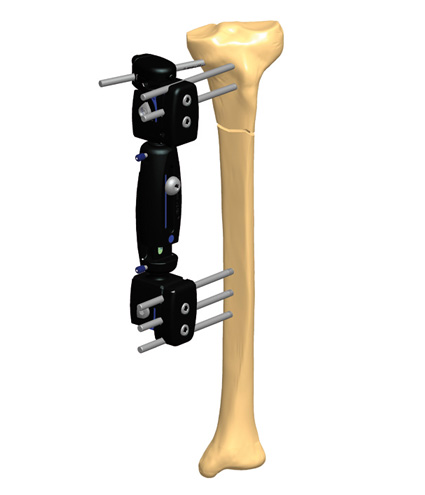
Fracture of the proximal tibia treated with XCaliber Fixator (91000 series) with T-Clamp....
READ MORE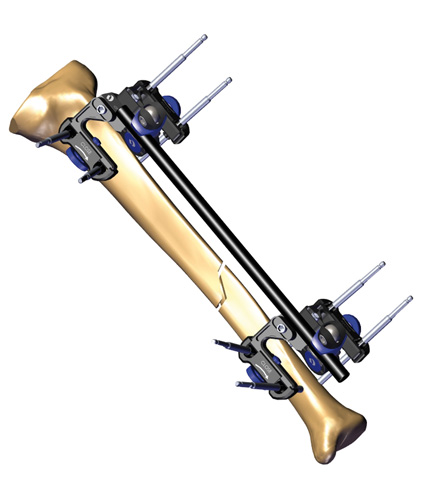
Diaphyseal fracture of the tibia treated temporarily with Galaxy UNYCO Diaphyseal Tibia frame and mo...
READ MORE
Segmental fracture of the tibial diaphysis treated temporarily with Galaxy UNYCO Diaphyseal Tibia fr...
READ MORE
Large unstable, segmental fracture of the tibial shaft; stabilized using the XCaliber Fixator (91000...
READ MORE
Large unstable, segmental fracture of the tibial shaft; stabilized using the Procallus Fixator (9000...
READ MORE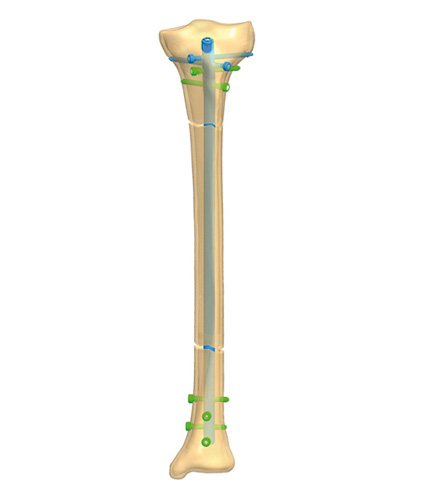
Centronail™ Titanium Tibial Nail
Long diaphyseal segmental fracture of the tibial shaft stabilized using the Centronail Titanium Tibi...
READ MORE
Distal tibial fracture stabilized using the Procallus Fixator (90000 series) with the Metaphyseal Cl...
READ MORE
Articular fracture of the proximal tibia treated with Galaxy Fixation™ system and TL-HEX....
READ MORE
Fracture of the tibial shaft stabilized using a closed frame with the Galaxy Fixation Gemini™...
READ MOREMORE POSTS

Foot and Ankle Charcot Reconstruction with External Fixation
Surgical reconstruction of foot and ankle Charcot with external fixation is especially useful in the presence of poor bone quality,Read More
Expert Tips on How to Medically Diagnose Charcot Arthropathy
The diagnosis of Charcot neuroarthropathy of the foot and ankle can be challenging due to a lack of information inRead More